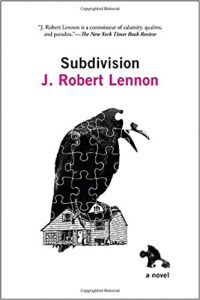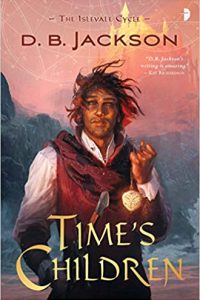Paul Di Filippo Reviews The Book of Lamps and Banners by Elizabeth Hand
 The Book of Lamps and Banners, Elizabeth Hand (Mulholland Books 978-0316485937, $27.00, 352pp, hardcover) September 2020.
The Book of Lamps and Banners, Elizabeth Hand (Mulholland Books 978-0316485937, $27.00, 352pp, hardcover) September 2020.
Aging punk photographer Cass Neary is the kind of person who, when invited into your home, uses the first excuse to visit your bathroom and rummage through your medicine cabinet for interesting drugs to steal. This makes her a less than ideal friend, but an excellent protagonist for a series of louche, bizarre adventures, beginning with the novel Generation Loss and continuing through Available Dark and Hard Light. Now comes Cass’s fourth outing, and while the reader who has thrilled to her prior grungy and gut-wrenching exploits will surely benefit from that familiarity, the novice reader can plunge with enthusiasm directly into this latest adventure, so cleverly does Hand set everything up. Elements of Cass’s backstory are deftly inserted as needed. But truth be told, the realtime doings are so gripping and suspenseful, so spooky and eerie, so vivid and beautifully limned, that you won’t have time to fixate on the past.
All you really need to know at the outset is that Cass, youthful photographer prodigy during the punk era, now aged 50-plus years, is a Graham-Greene-style “burnt-out case,” currently trapped in London (as an illegal visitor) by the circumstances of her last run-in with ancient artifacts and bizarre outsider types. Having been through a grueling series of murders and near-death perils in a very fraught few months, Cass is looking simply to escape to some refuge of peace and quiet. But she is sent down another trail of mystery when she becomes involved with the titular Book of Lamps and Banners.
All the previous novels in this series, while displaying an acid-edged noir naturalism, have dabbled with the occult and the fantastic. But this entry goes all the way over the edge. Consider it as a hybrid of The Crying of Lot 49 and Foucault’s Pendulum, with a soundtrack by the Ramones.
Cass is busy covering her tracks in London, wondering how she will reunite with her boyfriend Quinn and how they will evade the authorities. Of course she’s doing a bit of shoplifting and boozing and drug-ingesting to keep her spirits up. Then she chances to meet an old acquaintance, Gryffin Haselton, used-book dealer. Mutually surprised, the pair begin to converse. Cass learns that Gryffin has made the score of a lifetime: he’s acquired the only copy of The Book of Lamps and Banners (think the Necronomicon times ten). He has to deliver it to another, better connected dealer, one Harold Vertigan. Vertigan already has a buyer for the book, someone far outside Gryffin’s circle.
Cass agrees to accompany Gryffin to Vertigan’s home. (I might mention at this juncture that the portrait of Vertigan is slyly and sharply modeled on an actual professional bookman well known in our genre. One hint as to his identity is visible in this book before the tale even begins. I shall say no more.) There, Cass actually observes the rarity under discussion. Later she will register its phantasmagorical effects.
[A] molten whirlpool of insignia: horned circles and crescents, wheels and crosses and swastikas, teeth and birds that seemed to spell out a message I couldn’t decipher. I recoiled, hands in front of my face, and shut my eyes.
Yet I still saw those symbols, a pinwheel galaxy of blue and green and crimson, the poisonous yellow of a liqueur you know you’ll regret tasting but can’t resist. Pain exploded inside my skull as the symbols spun, fragmented into brilliant pixels that rearranged themselves into a series of freeze-frames, and began to move.
But while Cass and Gryffin are temporarily separated from Vertigan, disaster strikes. The book goes missing, and the only clue remaining is the name of the intended buyer, one Tindra Bergstrand. It eventuates that Tindra, a rich Silicon Valley ex-pat, has built an app, “Ludis Mentis,” to literally reprogram people’s mentalities, and The Book of Lamps and Banners is the last bit of “software” needed for perfection of the powerful tool.
Before you can say “The Big Lebowski” (Hand’s prose and delivery are eminently cinematic, and both the Coen Brothers and David Lynch could capture her ambiance, perhaps in tandem), Cass is desperately gallivanting all over a dismal, raddled London (eventually hooking up with Quinn), before following the trail of the book to Sweden, there to uncover a decades-old conspiracy involving music, mythology, and mania. Her success or failure remains balanced on a knife’s edge right up to the final few pages.
Hand has done what few authors of series fiction generally choose to do: introduce irreversible changes in the makeup and destiny of their protagonist. We begin with the shocking revelation that Cass has discarded her talismanic camera, carried since adolescence. Who is she, if she is not a photographer? Moreover, her vices, once tolerable and cherished, have begun to spiral out of control and become stale. Her relationship to Quinn—they act as narcotic obsessions to each other—also comes in for reevaluation. The book’s coda shows us a much different Cass than the one seen in the opening pages. There’s the tiniest hint that she is at the end of her adventures, but we hooked readers can pray otherwise.
If throughout the novel Cass had been the kind of vapid, shallow, drug-addled, cruel, and anti-social punk which, in reality, so many guttersnipes are, then the reader would have had no truck with her. But because Hand is creating art, not a documentary, she has endowed Cass with wisdom and fluency and sensitivity that allure us, despite all her coarse and unenviable exterior traits.
After a few minutes of pushing my way through overhanging limbs and past mossy stones, I reached a clearing. I ran my fingers through my hair, dislodging bits of bark and lichen, then cradled the camera against my chest. The Nikon may have been heavier than my old Konica, but its heft and shape were as familiar as my own hands. Despite my underlying dread and my brain ticking like an overheated engine, I felt exhilarated. Those few days without a camera had left me feeling as though I’d lost a sense more deeply embedded than sight, the sense that I can see everything at once, past and future and present, before choosing the precise moment to hit the shutter release and capture the single image that best represents the truth.
Digital photography expands that notion. Immediately and endlessly manipulable, it offers the illusion of infinite choice and recall: by constantly shooting or recording everything, one freezes the present, making it recoverable.
And yet the present is always lost. Film photography creates images from the stuff we’re made of: salt, traces of metal, water, carbon. Digital process makes us believe that we can control time. Film reminds us that we dissolve in it, like salt in water or bone in acid.
Like its fictive namesake, The Book of Lamps and Banners is an instrument to recalibrate the reader’s brain. You will not regret submitting to its spell.
 While you are here, please take a moment to support Locus with a one-time or recurring donation. We rely on reader donations to keep the magazine and site going, and would like to keep the site paywall free, but WE NEED YOUR FINANCIAL SUPPORT to continue quality coverage of the science fiction and fantasy field.
While you are here, please take a moment to support Locus with a one-time or recurring donation. We rely on reader donations to keep the magazine and site going, and would like to keep the site paywall free, but WE NEED YOUR FINANCIAL SUPPORT to continue quality coverage of the science fiction and fantasy field.
©Locus Magazine. Copyrighted material may not be republished without permission of LSFF.








